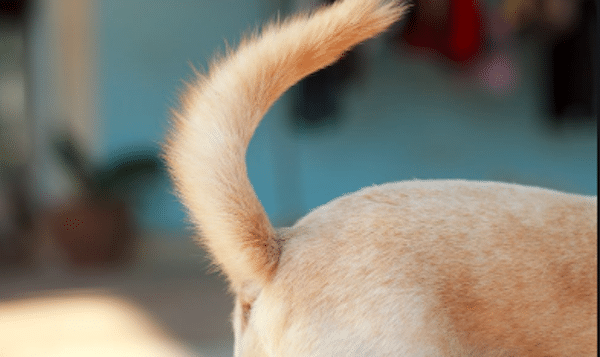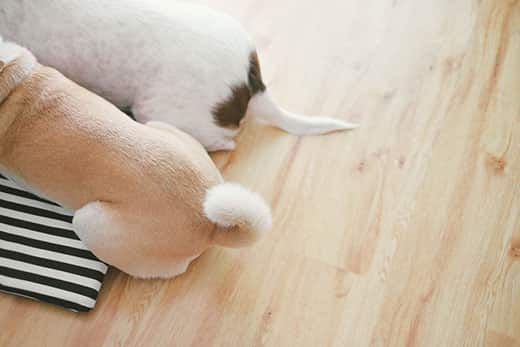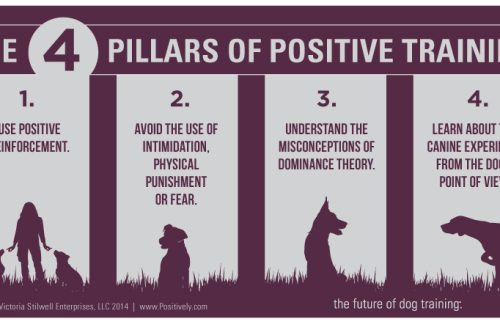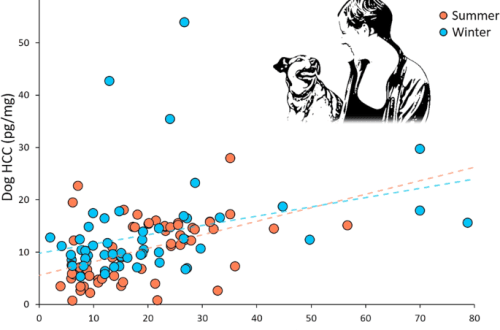
Causes of hair loss on the tail of a dog
If a dog’s hair comes out at the tail, this may be due to the fact that it is scratching, or it may indicate health problems. Itching and redness of the skin in an animal can be caused by allergies, fleas, hormonal disorders, behavioral disorders, or food allergies.
Although the exact reason why the dog’s hair fell out at the tail cannot be established without the help of a veterinarian, some signs should be paid attention to at home. Subsequently, these observations will help the doctor to draw the right conclusions.
Dog gnaws hair on tail?
The most important thing to pay attention to is whether the dog gnaws its own tail. In a pet that gnaws hair from its tail, the hairs in this area are coarse, curly and broken off. They may also be wet with saliva. The skin on the tail is likely to be red, inflamed and may have open wounds from aggressive biting.
Gnawing hair on the tail can be associated with flea allergy, especially during the warmer months when these insects are more active. If a dog is allergic to fleas, just one bite can be very itchy, causing it to gnaw on its tail to the point of open sores. Flea allergy dermatitis is the main reason why dogs constantly gnaw on their tail and may require treatment with flea medications, antibiotics and/or steroids to stop the itching.

Tail biting can also be the result of other types of allergies. If the dog has lost hair at the base of the tail, this may be due to atopy, or an allergy to environmental components, as well as food intolerance. Pets with these types of allergies are best fed a special diet food, and if necessary, a veterinarian will give specific nutritional recommendations.
Another reason why a dog may chew its tail is problems with the paranasal glands. If the dog licks and chews on the anus and rides on the carpet, or if the skin around the anus is swollen, there may be a problem with the paranasal glands. Treatment for inflammation of the paranasal glands includes squeezing the secretion from the gland, taking antibiotics, pain medications, and sometimes surgery may be required in case of infection or abscess. If your dog has regular problems with paranasal glands, your veterinarian may recommend a special dietary food.
Another unpleasant reason why a dog chews its tail can be intestinal worms. Tapeworms coming out of the anus can cause irritation that causes the dog to lick and bite the anus. The most common symptom of tapeworms is the appearance of tiny moving white organisms, like grains of rice, around the anus. Tapeworms need fleas to maintain their life cycle, so animals infested with fleas can also have tapeworms – a double whammy! If you or your veterinarian suspect that your dog has intestinal parasites, you need to find deworming drugs, and if tapeworms are suspected, flea removal should be done.
In some cases, dogs may gnaw hair off their tails as a response to pain. This can be caused by tail arthritis, a broken tail, a foreign body such as a spike lodged in the skin of the tail, or pain in the back of the back.
Emotional distress resulting from anxiety or fear and behavioral disturbances, including compulsive tail chasing, can also lead to compulsive tail-biting. All these conditions require different types of treatment, so it is necessary to consult with a veterinarian. If the dog bites its tail for behavioral reasons, the doctor may recommend a certified behaviorist to discuss helping the pet.
The dog’s hair came out near the tail. Could it just happen?
If the dog is not chewing his tail, but he is going bald anyway, it’s time to investigate other possible causes. In a pet whose tail hair falls out not because he chews it, the hairs on the tail appear even and not broken, and the skin is smooth, not red and not inflamed.
Hair loss on the tail and sides of the abdomen can be caused by hormonal problems such as hypothyroidism or Cushing’s disease. Dogs with an underactive thyroid often exhibit lethargy and weight problems. In addition to other clinical signs, Cushing’s disease in four-legged pets can be manifested by skin infections and hair loss.
If a veterinarian suspects a hormonal problem, the dog should be tested for hormones. You need to take a blood and urine test and, possibly, an ultrasound. To normalize the hormonal background, special medications are prescribed. Hypothyroidism is usually treated with thyroid supplements, while Cushing’s disease is treated with drugs or surgery.
If a dog gnaws hair on its tail or loses it due to hormonal problems, hair growth will return after the causes are eliminated. Wool grows in cycles, and accordingly, the rate of its growth will depend on the cycle. Therefore, the owner’s patience is the key to success!





